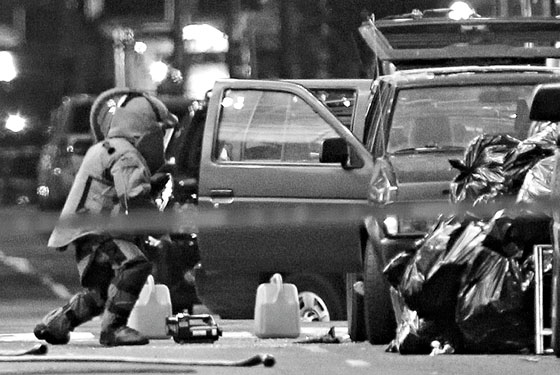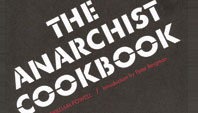
T he failed attack on Times Square was a reminder that terrorists can build deadly bombs in the comfort of their tri-state-area homes. But it also reminds us of the many obstacles in their way—from instructions to materials to problems that arise from not being able to test the devices.

A Bomber’s Education
Many have been trained: Timothy McVeigh in the Army; Faisal Shahzad, reportedly, in Pakistan. In terms of reference materials, there was The Anarchist Cookbook, a DIY manual written by anti–Vietnam War activist William Powell back in 1971. More than 2 million copies have been sold, and McVeigh and the Columbine killers consulted it. Powell has since gotten religion (not radical Islam) and condemned its publication. The web, unsurprisingly, has been a boon to bombers: Hamas conducted an online class in 2002, and Al Qaeda uploaded its “Al-Battar” training manual in 2004.
“Building a bomb is not as easy as it may sound on some websites. It does take a particular skill to assemble these things without killing yourself.”
—Terry Turchie, former head of the FBI’s Unabomber task force and co-author of Hunting the American Terrorist: The FBI’s War on Homegrown Terror
What Saved Us From Faisal Shahzad:
He used two children’s alarm clocks as a timer, fireworks as a blasting cap, kerosene as a detonator, and propane and fertilizer as explosives. But the fireworks were designed by the manufacturer not to ignite each other in a chain reaction and didn’t trigger the kerosene; also, the fertilizer was the nonreactive type.
Keeping Materials From Bombers:

AMMONIUM-NITRATE FERTILIZER
Often used in Afghan and Iraqi IEDs; was Timothy McVeigh’s main bomb component; Faisal Shahzad (right) used the wrong kind. Suppliers and purchasers must register with the government.

TATP
Can be derived from drain cleaner, hydrogen peroxide, and acetone (i.e., nail-polish remover)—but is volatile and subject to accidental detonation. Was used in the 2005 London attacks and by the “shoe bomber,” Richard Reid (right), in 2001 (the fuse in his shoe was sweat-dampened and wouldn’t light).

SEMTEX
A plastic explosive used for building demolition (and in many IRA attacks); main ingredients are RDX (used in the Moscow bombings) and PETN. Umar Farouk Abdulmutallab (right), the “underwear bomber,” tried to use PETN in his 2009 attack, but since it’s difficult to ignite (he tried to inject it with a nitroglycerin-like substance), he wasn’t able to do so before being restrained.
DYNAMITE
The main ingredient in a pipe bomb. Tightly regulated by the Bureau of Alcohol, Tobacco, Firearms, and Explosives.
A History of Explosive Devices
1920: A wagon filled with dynamite explodes at J.P. Morgan HQ on Wall Street.
1940-1957: The “Mad Bomber” plants 47 pipe bombs at NYC landmarks.
1969: Antiwar types bomb Rockefeller Center, the GM building, and the Chase Manhattan HQ.
1970: Weather Underground members are killed when they accidentally detonate a bomb on West 11th Street.
1978: The Unabomber begins his attacks.
1995: Oklahoma City bombing.
1996: The Summer Olympics in Atlanta are hit with a pipe bomb.
1999: Columbine attack, including pipe bombs and failed propane bombs.
2001: The “shoe bomber.”
2004: Madrid transit bombings.
2005: London transit bombings.
2007: A loose wire stops a car bomb at the Glasgow airport.
2009: The “underwear bomber.”
Have good intel? Send tips to intel@nymag.com.